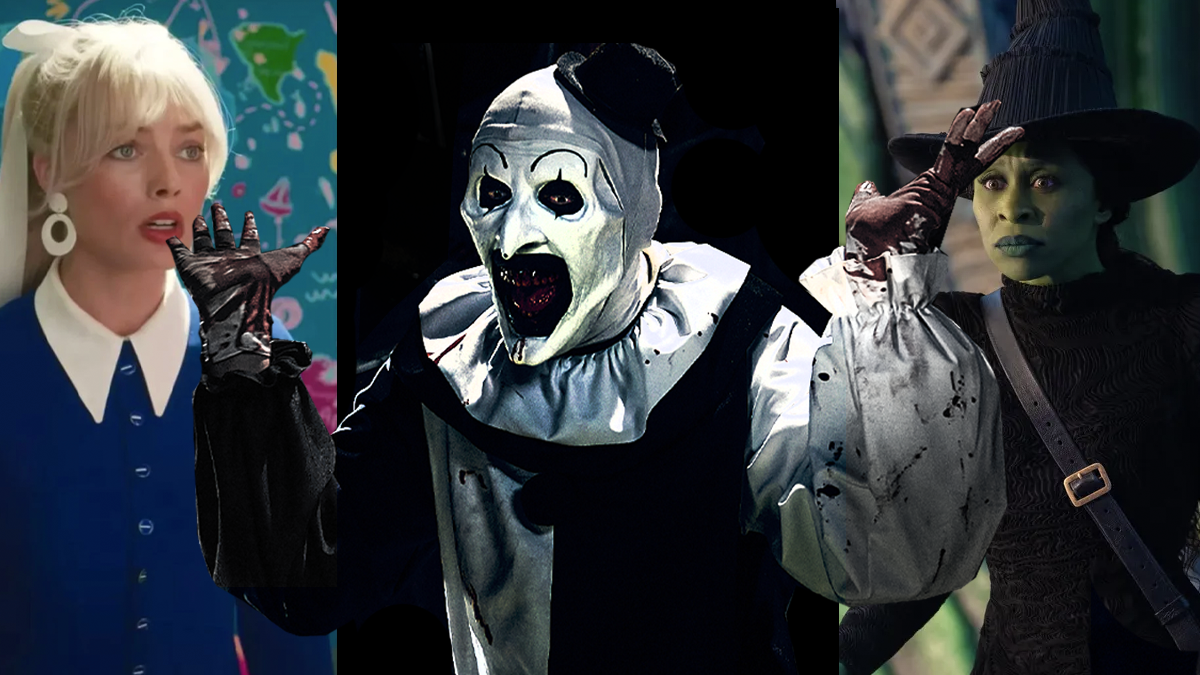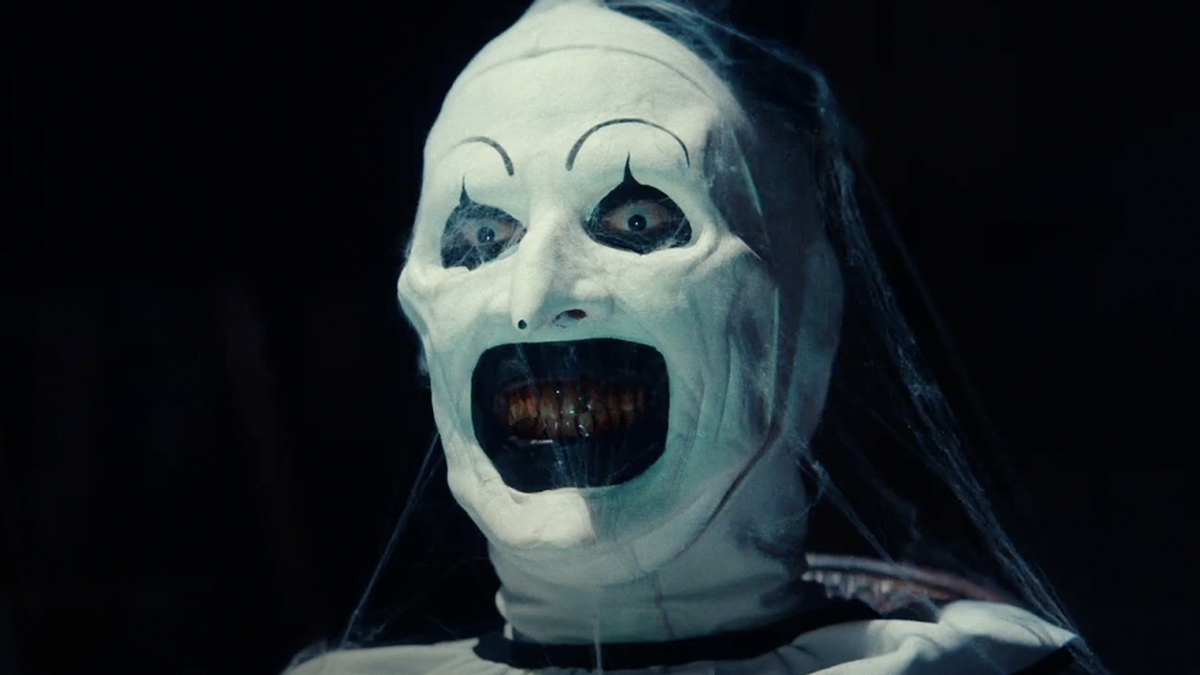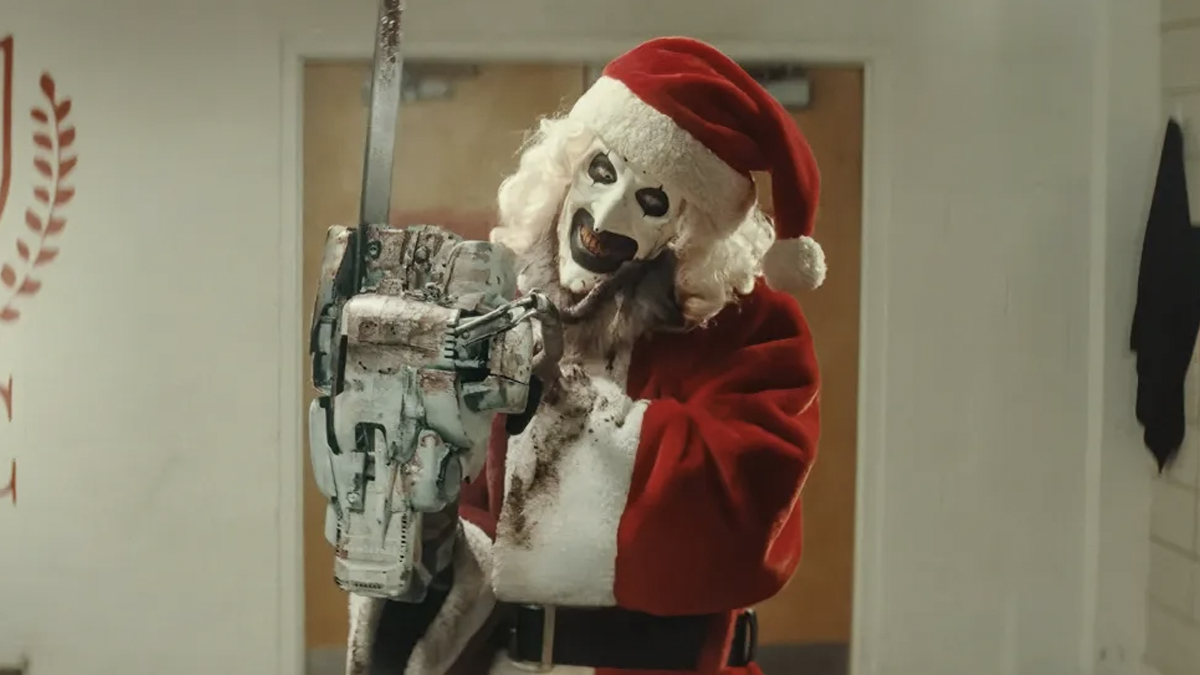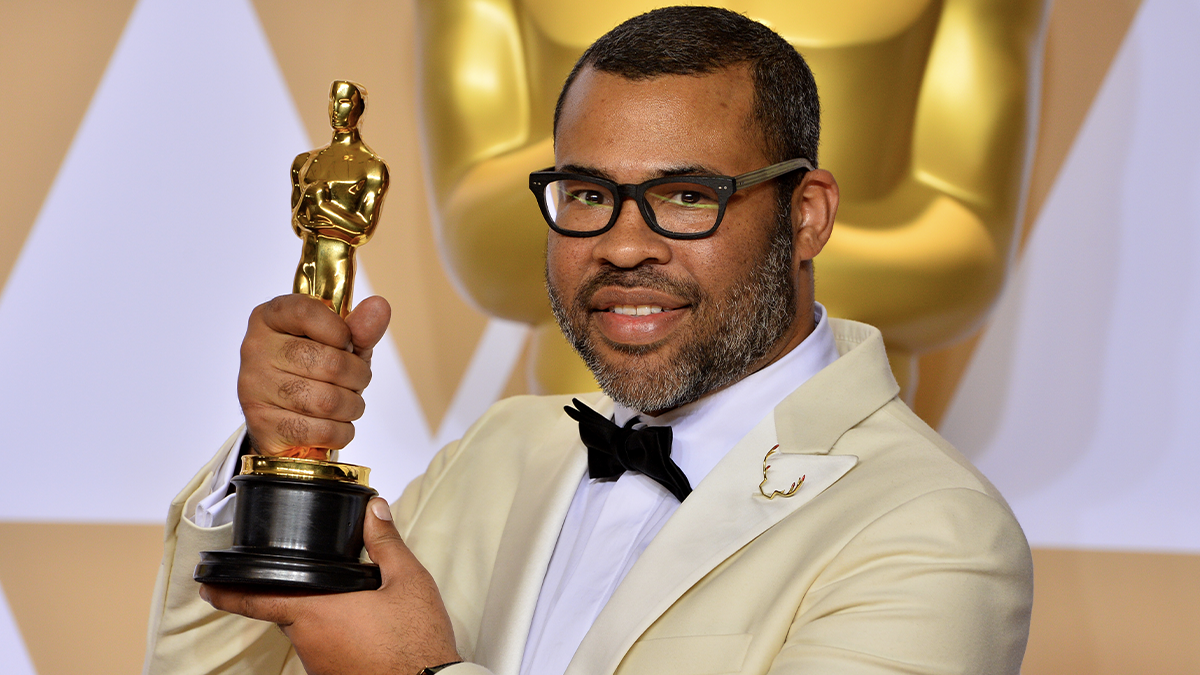Why ‘Terrifier 3’ Deserves Oscar Recognition for its Wicked Handmade Horrors

Note: There are mild spoilers for Terrifier 3 in this article.
In the aftermath of the AI apocalypse, modern cinema audiences are increasingly drawn to the tangible and tactile—real images on the screen that evoke a sense of in-the-room authenticity after decades of flat CGI and dead-eyed green screen nonsense. This hunger for the physical over the fabricated has made recent post-digital films like Barbie (2023) and Wicked (2024) cultural tentpoles celebrated for their old Hollywood-style studio sets and vibrant, handcrafted soundstages. These movies remind us of cinema’s ability to craft handmade magic through meticulous, practical design.
But where Barbie and Wicked use scenery and physicality to enchant, Terrifier 3 masterfully flips this appeal on its head. This nasty slasher movie’s commitment to practical effects doesn’t inspire wonder—no… but instead evokes something more primal: terror and discomfort. With its shockingly grotesque practical gore effects, Damien Leone’s Terrifier franchise embraces the same tangible artistry as Barbie but wields it to create a visceral experience through carnage.
If the purpose of cinema is to evoke an emotional response from its audience, then Terrifier 3 deserves an Academy Award nomination this year for Best Makeup. Franchise creator Damien Leone blends old-school craftsmanship with a relentless commitment to disgusting his audience, making this installment a standout achievement in makeup effects, not just in horror but in contemporary cinema as a whole.
A History of (Discrediting) Violence

Horror has long struggled for recognition at the Academy Awards, often relegated to the fringes of prestige cinema despite its enduring cultural and artistic significance. Still, there have been the rare moments when the Academy acknowledged the craft behind the scares. An American Werewolf in London made history in 1982 by winning the inaugural Oscar for Best Makeup, with Rick Baker’s transformative werewolf effects setting a gold standard for practical artistry. Decades later, Guillermo del Toro’s Pan’s Labyrinth (2006) earned accolades for its exquisite blend of makeup and visual effects, showcasing the beauty and terror of its fantasy-horror world.
These victories are the exception, not the rule. Despite the genre’s innovations in practical effects, films like The Thing (1982) and A Nightmare on Elm Street 3 (1987)—now celebrated as classics—were overlooked in their day. This oversight persists in contemporary cinema, where horror often elevates technical artistry to dizzying heights but rarely sees such contributions celebrated by the Academy. This is the bias industry in which Terrifier 3 emerged in 2024.
Positioned within the legacy of films like An American Werewolf in London and Pan’s Labyrinth, Terrifier 3 represents a modern evolution of the genre’s dedication to practical effects. Its gore is more than just shock value; it’s a meticulously crafted art (heh) form that invites viewers to experience discomfort and fear in a way that no CGI could replicate. By embracing this tradition and pushing it to new heights, Terrifier 3 demands recognition as a legitimate work of art (heh).
Perverse and impressive.

One of Terrifier 3’s most remarkable achievements is its relentless dedication to practical effects, brought to life by director Damien Leone, who doubles as the film’s special effects artist. Leone’s mastery of practical gore pays homage to the dark arts of old-school horror. It introduces innovative techniques that elevate the craft to a nearly operatic level of macabre storytelling. This commitment is vividly and especially showcased in three unforgettable scenes: the hatchet attack, the box cutter scalping, and the chainsaw shower scene.
The film wastes no time setting its tone with a horrendous hatchet attack, a sequence that blends physical effects with surprising psychological impact. As Art the Clown mercilessly swings the rusty weapon, the wounds inflicted feel disturbingly real. This effect is achieved by seamlessly integrating prosthetics, silicone layers, and clever camera work, creating a campy, tactile mayhem masterclass.
Arguably (if you’re me), the most unsettling set piece is the under-discussed box cutter scalping sequence. Leone’s practical effects shine here, creating a grotesquely hypnotic impact. It showcases his ability to transform raw violence into a perverse art form.
That shower scene, though…

The infamous chainsaw shower scene, a standout in the film’s climactic act, is where Leone’s effects work truly goes over the top. Art unleashes a chainsaw in a confined bathroom space, turning it into a chamber of crimson horrors. The sequence is relentless, using prosthetics, blood rigs, and hidden tubing systems to create a grotesque cascade of blood and flesh. It’s not just a technical marvel—it’s a darkly comedic escalation of chaos, cementing Art the Clown’s status as one of horror’s most inventive killers.
Full disclosure:
Terrifier 3’s cultural impact is undeniable, transcending its modest roots to become a global phenomenon that has captivated horror fans and sparked conversations about the boundaries of practical effects in modern cinema. Its success is a testament to the power of grassroots genre filmmaking, proving that even the most niche and extreme films can achieve widespread acclaim.
However, I really should acknowledge my bias: At Dread Central, I technically work for Epic Pictures, our parent company that distributed the first Terrifier, and I have closely followed the franchise’s evolution since 2021. However, it’s worth admitting that I am not especially a fan of the films—my squeamish nature makes the relentless gore difficult for me to stomach or, ultimately, enjoy. But perhaps that’s precisely why I find the franchise’s achievements so impressive: even someone who struggles to watch these films cannot deny their artistry, technical innovation, and the way they’ve captured the zeitgeist.
Put an end to genre bias.

In an era defined by the resurgence of post-digital cinema, Terrifier 3 stands as an example of the power of practical effects to create unforgettable cinematic experiences. After decades of lifeless CGI characters and sterile green-screen worlds, filmmakers and fans are championing a return to the tangible artistry of practical craftsmanship.
Just as Barbie and Wicked celebrate the magic of physical sets, Terrifier 3 uses practical effects to evoke something entirely different: terror, disgust, and visceral unease. Leone’s roles as director and conductor of an incredible team of special effects artists uniquely position him as an auteur of gore, elevating Terrifier 3 beyond exploitation into a work of macabre innovation. By awarding this team of artists an Oscar nomination for Best Makeup, the Academy would honor his undeniable contributions to indie filmmaking and celebrate the enduring power of practical effects as a vital, irreplaceable element of cinematic storytelling.
Terrifier 3 is now available to rent or own on Digital.
Categorized: Editorials
